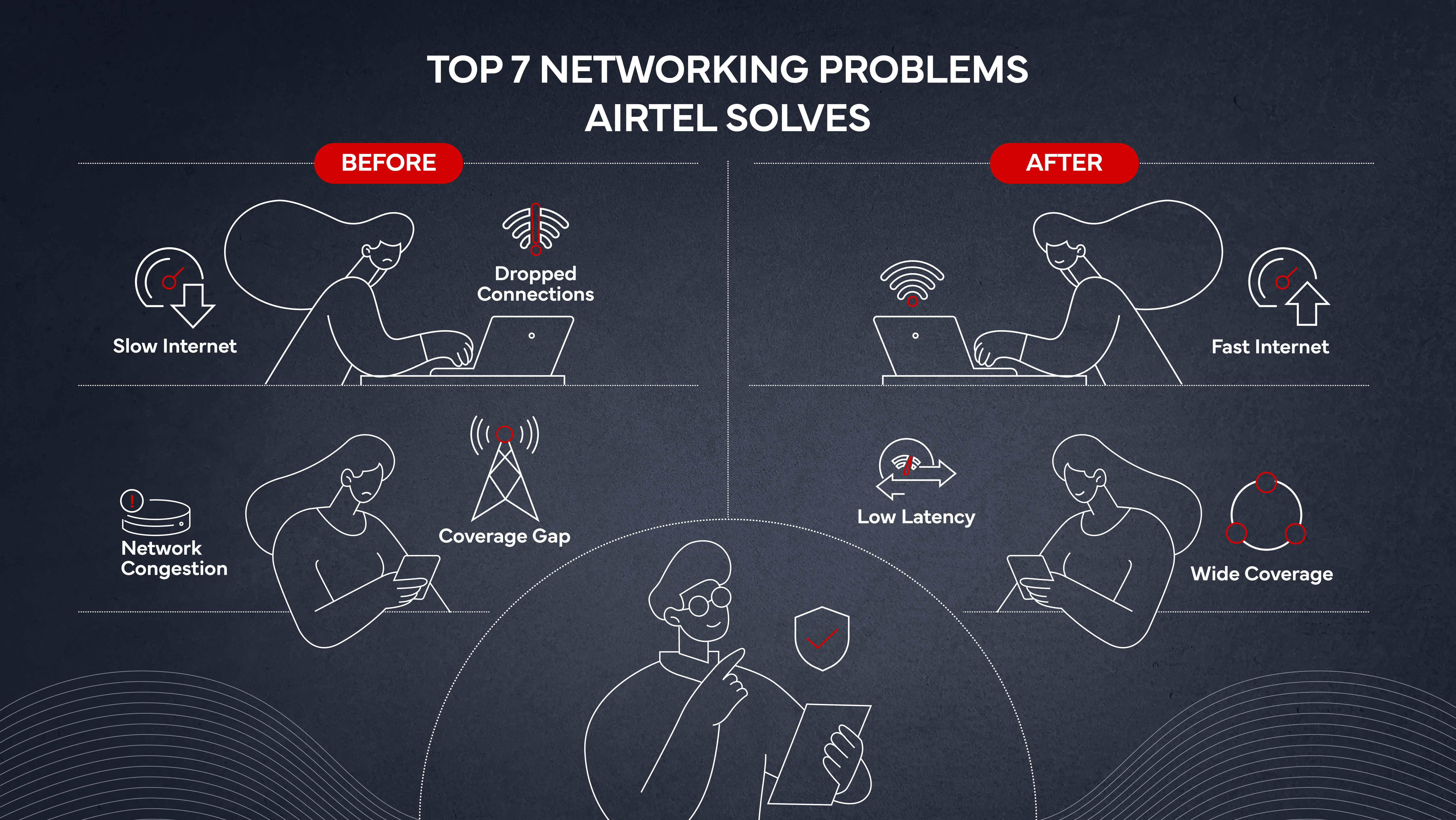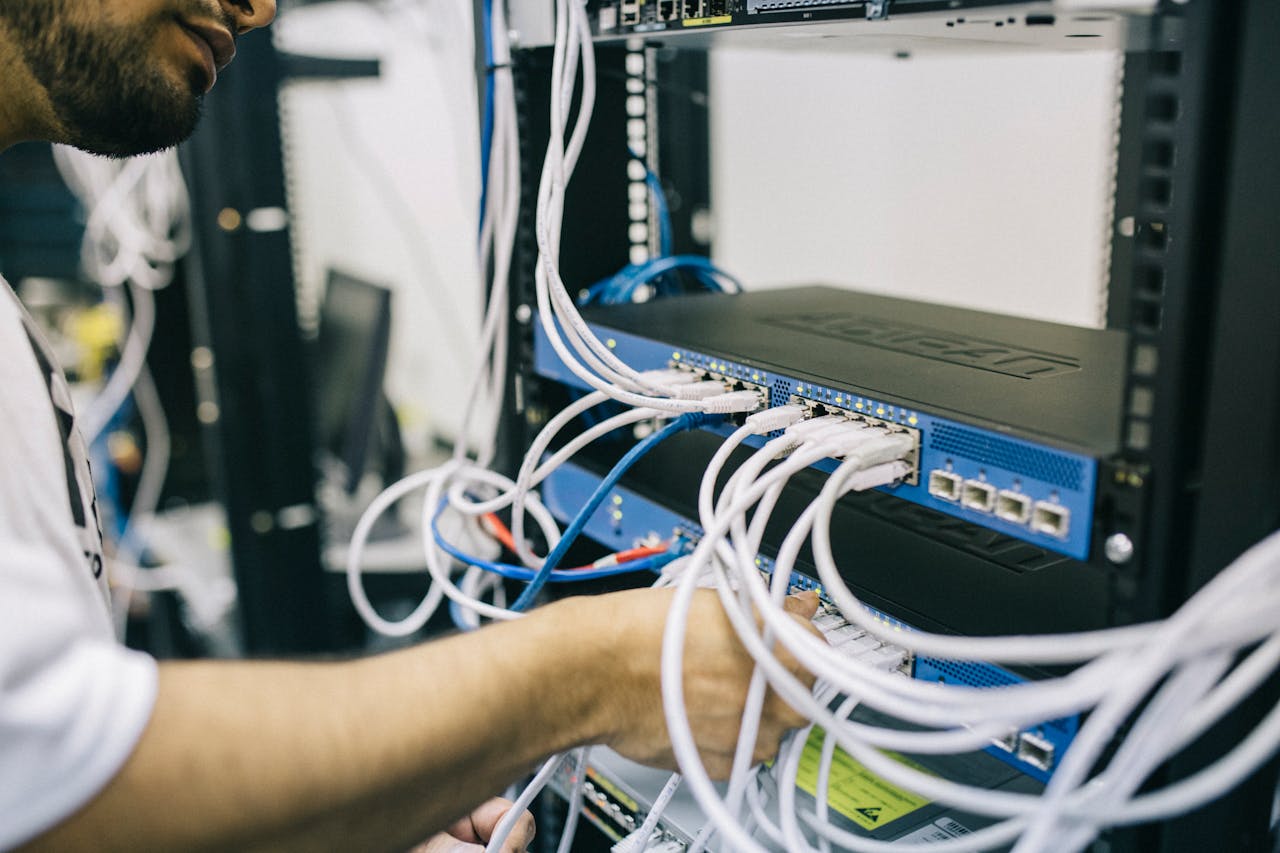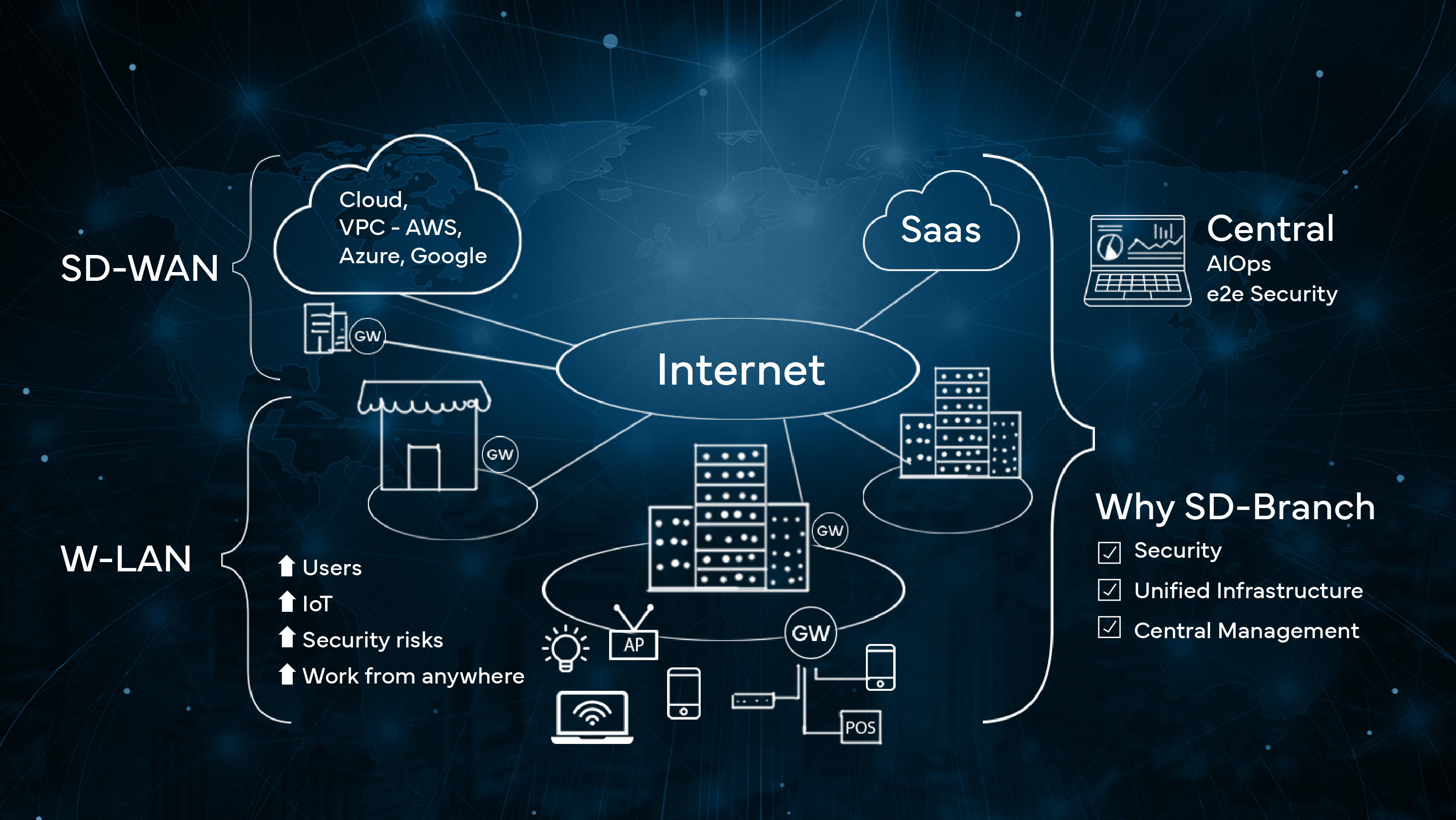7 Common Networking Challenges Solved by SD-Branch
-
June 19, 2025
-
6 min read

Simplify. Secure. Scale.
In today’s fast-moving digital landscape, enterprise networks must do more than just connect devices—they need to deliver speed, security, and scalability across dozens or even hundreds of branches. Yet, traditional setups often become bottlenecks, not enablers.
From delayed branch rollouts to security blind spots and performance inconsistencies, legacy network architectures are struggling to support today’s hybrid, cloud-first enterprise.
That’s where SD-Branch steps in.
By integrating SD-WAN, security, LAN/Wi-Fi, and real-time analytics into a single platform, SD-Branch is redefining branch network management. Here’s how it solves seven of the most common networking challenges faced by modern IT teams:
1. Slow Rollouts Fixed with Zero-Touch Provisioning and Cloud-Based Deployment
Rolling out new branch locations traditionally takes weeks due to hardware shipping lags, manual on-site configuration, and a shortage of skilled IT support at remote sites.
Traditional rollouts are slowed by hardware shipping delays, on-site setup, and limited IT staff at remote branches.
With SD-Branch:
- Pre-configured devices like routers, switches, and access points arrive ready to deploy
- Branches auto-connect to the cloud and download security, connectivity, and policy configurations
- Airtel provides end-to-end services—including last-mile connectivity, integrated security, and managed support
- Entire branches go live in hours, not days, with minimal on-site effort
Zero-touch provisioning saves up to ₹15,000 per site, slashing costs and time by eliminating the need for on-site IT resources and manual configuration.
2. Complex Operations Simplified with Centralized Orchestration and Unified Policy Control
Managing multiple vendors, fragmented policies, and isolated systems increases workload and risk.
Managing multiple vendors, legacy firewalls, and dispersed configurations creates chaos.
With SD-Branch:
- All functions—WAN, WLAN, and security—are managed from one centralized dashboard
- Thanks to centralized orchestration and unified policy control, policies are pushed to all sites in a single click
- Consistent policy enforcement eliminates misconfigurations across branches
SD-Branch combines 4 network layers (SD-WAN, LAN/Wi-Fi, security, and analytics) into one platform, removing multi-vendor overhead and significantly lowering OPEX.
3. Inconsistent Performance Resolved with AI-Driven Optimization and Dynamic Path Selection
Remote sites often face latency, jitter, or downtime—especially for cloud-hosted and real-time applications like Zoom, Salesforce, or Microsoft Teams.
Critical applications often struggle with congestion and jitter at remote branches.
With SD-Branch:
- AI engines dynamically steer traffic across MPLS, broadband, 4G/5G, and Internet Leased Line (ILL) connections
- Critical applications are automatically prioritized for consistent performance
Organizations have reported a 2–5% improvement in operational efficiency through consistent performance optimization across branches.
4. Security Gaps Eliminated with Built-In Zero Trust and Unified Threat Protection
As organizations expand, maintaining consistent security across branches, remote workers, and IoT devices becomes increasingly difficult.
Branch expansion opens new threat vectors, especially with IoT and remote work.
With SD-Branch:
- Zero Trust Network Access (ZTNA) is built in
- Based on SASE principles, micro-segmentation and policy enforcement are applied at every site
- Firewalls, IDS/IPS, and malware protection are fully integrated for end-to-end threat defence
Research shows that up to 66% of SD-WAN implementations lack advanced security features like threat detection and cloud access controls, making integrated SASE capabilities in SD-Branch a game-changer. Airtel’s managed security services further elevate this by delivering a Mean Time to Detect (MTTD) of under 20 seconds, keeping threats contained and your network secure.
5. Lack of Visibility Solved with Real-Time Monitoring and End-to-End Network Analytics
Without end-to-end visibility, diagnosing outages, latency spikes, or policy breaches becomes reactive and inefficient.
Blind spots across WAN, Wi-Fi, and devices make troubleshooting reactive and slow.
With SD-Branch:
- Unified dashboards provide real-time performance and threat data
- Centralized analytics help predict and resolve issues fast
- Monitoring spans all layers—WAN, WLAN, user, device
Businesses using SD-Branch reduce Mean Time to Resolution (MTTR) through real-time telemetry and visibility across all endpoints and transport types, eliminating the need for 3–4 separate tools. Studies have shown that SD-Branch deployments can reduce Mean Time To Resolution (MTTR) by up to 45 seconds, significantly improving network resilience and responsiveness.
6. Scalability Bottlenecks Removed with Cloud-Native Architecture and Flexible Licensing
Legacy networks require significant infrastructure changes and vendor coordination to scale effectively.
Adding new sites or scaling bandwidth should be easy, but legacy networks make it expensive and complex.
With SD-Branch:
- Branch expansion is simplified with cloud-based provisioning—no on-site IT required
- Multiple transport types are supported, including Broadband, 4G/5G, and Internet Leased Line (ILL)
- Ideal for businesses with lean IT teams, SD-Branch offers a one-stop, fully managed solution that scales as you grow
Statistic: Cloud-native SD-Branch deployments support on-demand scale and reduce infrastructure costs by avoiding heavy upfront CAPEX.
7. Multi-Vendor Chaos Replaced with a Unified SD-Branch Platform
Too many vendors mean too many dashboards, support calls, and integration risks.
With SD-Branch:
- One platform combines WAN, WLAN, security, and analytics
- No more juggling contracts or compatibility issues
- Fully managed
Consolidating network functions into a unified SD-Branch platform eliminates the need for 4–5 separate vendor tools, reducing complexity and simplifying SLAs.
One-Glance Recap: SD-Branch in Action
| Challenge | SD-Branch Solution | Real-World Benefit |
| Slow rollouts | Zero-touch provisioning | Cut deployment time and costs (₹15K saved/site) |
| Complexity | Unified dashboard | Fewer tools, centralised control |
| Performance issues | AI-based routing | 2–5% increase in efficiency |
| Security risks | Built-in SASE | End-to-end protection |
| Poor visibility | Real-time monitoring | Reduced troubleshooting time |
| Scalability | Cloud-native platform with zero-touch provisioning | Add sites in days |
| Vendor sprawl | One solution to replace multiple network vendors | Simplified operations and cost savings |
It’s Time to Rethink Branch Networking
As businesses expand into new markets, embrace hybrid work, and accelerate digital transformation, the old way of managing branch networks simply doesn’t scale. Complexity, inconsistency, and high costs have become barriers to growth, not just technical challenges.
SD-Branch changes that equation.
By combining SD-WAN, security, LAN/Wi-Fi, and real-time intelligence into a single cloud-first platform, SD-Branch offers more than just connectivity—it delivers control, security, and agility across every location.
Whether you’re rolling out new branches in days, gaining full visibility into your network, or securing every endpoint with built-in SASE, SD-Branch helps your business move faster, stay protected, and operate smarter.
It’s not just a better network.
It’s a smarter way to grow.
Ready to simplify your branch operations?
Talk to an SD-Branch expert today and discover how SD-Branch can help you connect, protect, and grow—branch by branch.
 Share
Share









